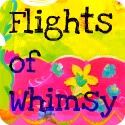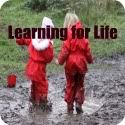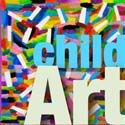This Spring, we were fortunate enough to be given two big crates full of bulbs from one of our preschool families. We bagged up and sold some of them as part of our fundraising endeavors (we are a non-profit preschool) and mass planted quite a lot more of them in our playground garden beds. But, we saved just a few to allow the children the opportunity to see the full growth and development of a bulb into plant.
The best way to allow the children to observe the whole process is by creating a ‘Bulb in a Jar’. A great hands on experience for the children. First they poured some water into a jar, right up to the brim.
Then they used toothpicks to push into the sides of the bulbs to help stabilize them as they rested on the top of the jar. This bit can be a bit tricky for the children, but determination will see success!
There was a lot of discussion generated about the HOW?… WHY… ? and WHEN? of the process. Of particular importance was the question, ‘How long will it take?’ The children talked among themselves, theorizing and forming hypotheses.
Together we decided that this shelf in our new outdoor room was a great place to keep our bulbs. It was thought that this would be a safe location and that it would also provided ample sunlight to help our bulbs grow. The children new that the bulbs needed water and sunlight if they were to grow.
In our initial observations, the children noticed that the roots started to grow first, and they questioned and wondered why. Cleverly they decided that the bulb had to get water first because the leaves couldn’t grow without water.
We watched the leaves sprout forth and the children patiently (well most of them!) looked forward to our first flower.
It took about 3 weeks and then…
… one beautiful Spring morning, there it was! Our first pretty little jonquil in a jar!










































